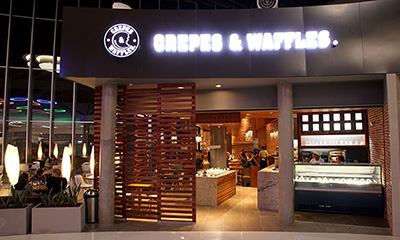Traditional digital radios have been at the forefront of many industries for decades. However, in today’s world, many businesses report that their traditional two-way radios are unable to provide the service they require.
Why push-to-talk over cellular technology is challenging traditional two-way radios
The high cost of setting up a two-way radio structure, along with expanded feature sets and superior user experience, are just some of the reasons that push-to-talk over cellular technology is challenging traditional two-way radios.
A slowdown in the global economy is making users more sensitive to price, and in this blog we focus on the costs involved with two-way radios, including expensive base stations, private servers and the devices associated with legacy radios.
An example of the eye-watering costs that can be involved in two-way radio systems is the Airwave TETRA network.This is costing the UK taxpayer £1,300 per device per year. The Competition and Markets Authority had to step in with a price cap to protect emergency services from paying over the odds.
What costs are involved in the set-up of a two-way radio system?
The costs involved in setting up a two-way radio system can vary from a few thousand dollar to tens of thousands depending on various factors. These include the scale and complexity of the system, the size and scope of the project, the type of radios and accessories required and any ongoing operational expenses.
The cost of a two-way radio ranges from relatively inexpensive consumer-grade radios to expensive commercial-grade models with advanced features. Additional accessories are often required, for example, batteries, chargers, headsets and microphones. The cost of these can add up quickly – especially where a large number of radios are in use.
More complex radio systems, including wide-area networks, require significant investment in infrastructure. This includes the cost of repeaters, base stations, antennas, and tower installations. The cost of installing and configuring a radio system, including cabling, network set up and labour costs all needs to be considered too.
In addition, if specialised software for features such as GPS tracking and encryption or integration with other systems is required, software costs and licenses are usually needed. The cost of these can vary but are often high and need to be considered when introducing a two-way radio network. Other factors to consider include maintenance, repairs, and support ensure the reliability of the system.
System upgrades and expansions should also be considered and budgeted for.
What makes PTToC more cost effective?
In contrast to two-way radio systems, push-to-talk over cellular (also known as PTToC, PTT and PoC) works much like a regular two-way radio except instead of using expensive infrastructure, the standard cellular GSM/3G/4G mobile phone network is used. This means that PTT technology can be used anywhere there’s a mobile phone signal.
With PTT, users can simply download an app to their Apple or Android smartphone, register to start the service and begin communicating instantly, at a fraction of the cost, with individuals, groups and dispatchers virtually anywhere the world.
Users can also benefit from monthly subscription models and are able to add or remove features as needed.
It’s no surprise then that more and more businesses are making the transition from two-way radio to more affordable PTToC technology for their team communications.




